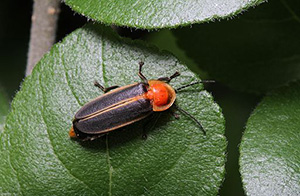Do You See the Light? Glowing, Glowing, Gone
Do You See the Light? Glowing, Glowing, Gone
By Environmental Management System
April, 2015

For the longest time, fireflies were a mainstay of early summer nights in the south and across the United States, twinkling in the sky at dusk in May and June to mark the official start of summer. As you may have noticed, fireflies are disappearing from the sky at an alarming rate. This decline has been observed all over the world, but has been especially prevalent in developing countries.
Fireflies were, at one point, very common in fields, forests, marshes, and other areas where water kept the ground somewhat wet. These insects, also called lightning bugs, are the world’s most efficient light producers. They are neither flies nor bugs, but are actually beetles. Adult fireflies communicate through flashing lights at dusk through the production of a chemical called luciferin. Some species also produce a toxin that protects them from lizards, birds, and other animals. Larvae develop from eggs laid in damp areas. Over the next few years, the larva feed on worms, snails, slugs and other bugs before they develop into adult fireflies, mate, lay eggs, and start the cycle again. If this food chain is impacted and larvae are unable to survive, it may reduce adult firefly populations for several years.
Human Impact on Fireflies
Human actions can significantly change this food chain have a ripple effect across many generations of fireflies, decreasing firefly populations worldwide. Urban development, including increased construction and drained marshes, dries out the environment needed by the larva. Pesticides either kill the larva or kill off its food supply.
Increased light at night from homes, cars, stores, and streetlights, can mask complex firefly communication and breeding rituals. Synchronized flashes can become asynchronous and the message botched, which impacts the mating process. An April article further explored the impact of artificial light on nocturnal animals.
What Can You Do?
Humans can make their yard firefly friendly by minimizing the use of pesticides and chemical fertilizers in their gardens, as well as reducing the frequency in which the lawn is mowed and adding trees and shrubs to the landscape. Allowing leaf litter to accumulate as much will hold moisture near the ground and create breeding grounds for larvae. Turning off exterior lights during firefly season and adding a small water feature may also help bring the fireflies back to your yard.
More Information
- Lightning Bugs - Kentucky Insects University of Kentucky
- Synchronous Fireflies - National Parks Service
- Vanishing Firefly Project - Clemson Public Service Activities



